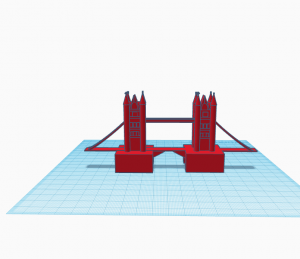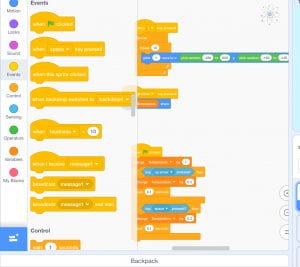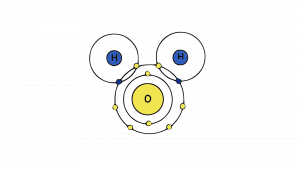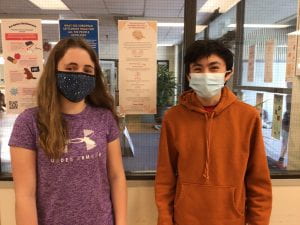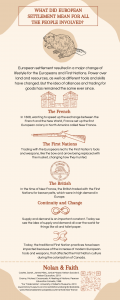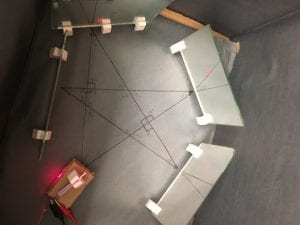How is the reproduction of cells essential to the survival of organisms? That was the driving question to my most recent scimatics project, Meiosis models. For this project, we cloned plants, learned how to use some laboratory equipment, researched asexual and sexual reproduction, made models, and presented all of our learning in a video.
At the beginning of this project we created a start mind map that showed all the previous learning we had on the subject of meiosis and mitosis; for me, that knowledge was a bare minimum. Because I did not have much knowledge I included a bunch of questions I wanted to answer through this project. Throughout all the workbooks, lab classes and videos we watched I learned more about this topic and as a result I could answer most of my mind map questions and create my end mind map. Both mind maps are included below and you can see where I saturated and where I am now.


Curricular Competencies:
Questioning and Predicting: demonstrate a sustained intellectual curiosity about a scientific topic about a scientific problem or topic of personal interest.
When I look back at this project I showed this competency through how well I managed my time in class. After getting instructions, I would go to LAC to work on my workbook and on the milestones, because the work space makes it easier for me to focus. I also made sure to ask Mr. Gross a few questions to clarify what I needed to include in the final product.
Planning and Conducting: collaboratively and individually plan, select, and use appropriate investigation methods including field work and lab experiments to collect reliable data.
 I showed this competency throughout the project starting with the cloning of the plant. Later we took the root of the plant, followed steps, and made slides we could see under the microscope. On my first three tries, I was not able to get clear photos that showed evidence of Mitosis in the cells. I communicated that problem to Mr. Gross and it seemed I was not the only person who needed better examples so the next class Mr. Gross brought in pre-made slides. With those slides, I took photos and then later identified each stage of mitosis of cells. This data was important for my final product.
I showed this competency throughout the project starting with the cloning of the plant. Later we took the root of the plant, followed steps, and made slides we could see under the microscope. On my first three tries, I was not able to get clear photos that showed evidence of Mitosis in the cells. I communicated that problem to Mr. Gross and it seemed I was not the only person who needed better examples so the next class Mr. Gross brought in pre-made slides. With those slides, I took photos and then later identified each stage of mitosis of cells. This data was important for my final product.
Scientific Communication: formulate physical or mental theoretical models to describe a phenomenon.
This competency was very clearly shown with my final product which was a video with voice narration and communicated my knowledge of Meiosis and Mitosis. In this video, I clearly stated many of the reasons and the process of Meiosis and mitosis through the photographs and through the 3D tinkercad models that I had made earlier in the project. The 3D models which showed all the stages of Meiosis and Mitosis and was the most difficult part of the project for me because it was very time consuming due to all the different stages needed to be shown. I also displayed my knowledge about the similarities and differences of Meiosis and Mitosis, which I had done extra research on, towards the end of my video.
I really enjoyed many aspects of this project especially the use of lab equipment such as the microscope to look at the cells. I had never really done anything like that before and it was a good learning experience.

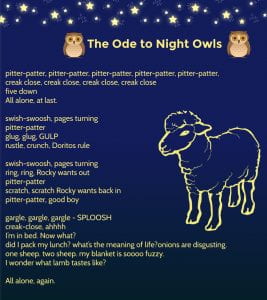

 can recognize my strengths and take responsibility for using strategies to focus, manage stress, and accomplish my goals. I use the THINGS app and my timer and go to LAC in order to focus and manage my time and goals. To manage my stress I exercise, and go to bed on time as much as a night owl can. If school was later in the day like 8 pm my stress level would go down. That is just a suggestion. The main challenge to this area is my anxiety which completely blocks my thinking and strategizing.
can recognize my strengths and take responsibility for using strategies to focus, manage stress, and accomplish my goals. I use the THINGS app and my timer and go to LAC in order to focus and manage my time and goals. To manage my stress I exercise, and go to bed on time as much as a night owl can. If school was later in the day like 8 pm my stress level would go down. That is just a suggestion. The main challenge to this area is my anxiety which completely blocks my thinking and strategizing. 
 diagrams. I also achieved an accomplished in this competency. First I showed this competency through the workbooks when I began to build my knowledge on chemistry. I interpreted the knowledge form the workbooks when I created the animated video in Keynote. My video used Bohr models to show the exchange in the ionic bond and the sharing in the covalent bonding.
diagrams. I also achieved an accomplished in this competency. First I showed this competency through the workbooks when I began to build my knowledge on chemistry. I interpreted the knowledge form the workbooks when I created the animated video in Keynote. My video used Bohr models to show the exchange in the ionic bond and the sharing in the covalent bonding. End mind map
End mind map




 more comfortable you are around people the more comfortable you are in speaking your mind. Unlike the first graph, we did not find causation in the second graph.
more comfortable you are around people the more comfortable you are in speaking your mind. Unlike the first graph, we did not find causation in the second graph. were able to successfully explain how one of the graphs had both causation and correlation while the other one did not have causation. We showed the difference between correlation and causation and how correlation is sometimes falsely associated with causation. We used a funny cartoon to help make our point.
were able to successfully explain how one of the graphs had both causation and correlation while the other one did not have causation. We showed the difference between correlation and causation and how correlation is sometimes falsely associated with causation. We used a funny cartoon to help make our point.
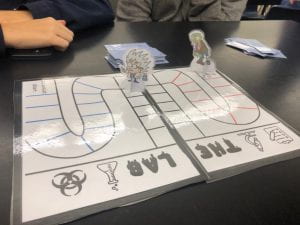 the scientist gets to the lab first she can mass produce the cure and save the world. If the Zombie gets to the lab first, he would destroy the Scientist and the Zombie’s would win. This is a two player game that lasts about 10-15 minute and uses exponent laws to decide who moves forward.
the scientist gets to the lab first she can mass produce the cure and save the world. If the Zombie gets to the lab first, he would destroy the Scientist and the Zombie’s would win. This is a two player game that lasts about 10-15 minute and uses exponent laws to decide who moves forward. clear, and simple. The first person to get an equation right moves forward one space. The point system wasn’t just earning points it was about using the equations to move towards a goal. The conditions to win were effectively designed.
clear, and simple. The first person to get an equation right moves forward one space. The point system wasn’t just earning points it was about using the equations to move towards a goal. The conditions to win were effectively designed. is a speed factor to get to the end before the other player making it a fun competition. I had one page of clear and complete instructions with lots of pictures and examples. I think I only earned an accomplished not an extending because I only used 4 exponent laws which was the minimal amount. Even though we didn’t have turns, there were rounds and at least one exponent law was used in every round.
is a speed factor to get to the end before the other player making it a fun competition. I had one page of clear and complete instructions with lots of pictures and examples. I think I only earned an accomplished not an extending because I only used 4 exponent laws which was the minimal amount. Even though we didn’t have turns, there were rounds and at least one exponent law was used in every round. partner. We both had ideas that were used in the game. We did trials with game ideas to see what would work and we divided up tasks well according to our schedules and talents. I left the drawing to her but I got all the equations organized. We didn’t have a problem staying on task and focused on the game throughout the project.
partner. We both had ideas that were used in the game. We did trials with game ideas to see what would work and we divided up tasks well according to our schedules and talents. I left the drawing to her but I got all the equations organized. We didn’t have a problem staying on task and focused on the game throughout the project.
